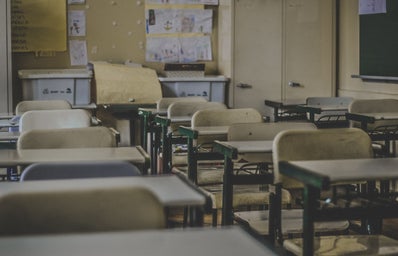Back in March when schools shut down, my private catholic school had a relatively easy transition. Due to our nature as a device school, all of our assignments were already online and available at a moment’s notice. This was a privilege that I never fully realized until this pandemic happened.
The public schools in my area were struggling as they were originally planning to just have an early two week spring break to avoid online school. Then as the pandemic evolved, it was clear virtual learning was necessary. This was something that the system was not equipped for and the conversion was difficult.

While the students at my school were still learning and being graded, the students at public schools had a loose system of education with assignments only having the ability to be extra credit. Although this was the right thing to do at the time as the system was unable to distribute technology to those that needed it, this essentially made school optional. For almost half a year public students were not being challenged at the same rate as private school students.
This issue concerns me greatly because I am from a relatively affluent county in an extremely wealthy state, so if these issues were occurring in my town, then lower income areas were in immense danger of detrimental educational differences.
A major issue due to these closings is that many high school students run the risk of dropping out to find work because their family is losing money due to rising unemployment rates. The executive director of the United Nations Children’s Fund estimated in CNBC that 24 million children globally could drop out of school due to the pandemic. At some high schools in Los Angeles it was reported by USA Today that 25% of high school students had not logged on to virtual school at all.
The issues of the pandemic affect minority communities the most both in infection rate and economic problems. It was reported by Pew Research Center in USA Today that nearly half of Latinos reported that they lost a job or had a pay cut due to COVID-19 compared to a third of all U.S. adults. This causes many teenagers to have the burden put on them to pay for family expenses for them and their siblings.
Educational inequality is especially noticeable with younger students, specifically the ones who are first learning how to read and count. With older students there is at least a basic foundation making self-directed learning relatively easy. Many have the opinion that high school should be more fluid and allow more personalized learning therefore it is arguable that this pandemic gave high schoolers that chance. However, younger students do not have a foundation of education and cannot simply teach themselves. If there is a system set in place with virtual synchronous learning it is extremely difficult to have a young student, who can barely focus in person, focus on a screen.
Once again, those at greatest risk are younger students in lower income areas. In underfunded school districts, it is harder to provide virtual learning tools such as educational software and laptops. Although many school districts have had the ability to obtain these materials a conducive home environment for the student is not promised.
According to a study outlined by CNBC that was done by Common Sense Media and The Boston Consulting Group, 30% of K-12 students live in a home without wifi. Without wifi virtual learning is essentially impossible.
Lower income parents do not have the ability to skip work and are often essential workers whose jobs continued to be in person throughout the lockdowns. Therefore, students are lacking an adult at home to help them with work and to push them to focus. Whereas, wealthier kids can access tutors, study pods or even just babysitters. This is an extreme privilege that lower income families are not afforded.

Another vulnerable population are those with disabilities that require special education. This is a factor that I had completely overlooked until I drove past my local public special education school and noticed it was empty. Special education students are reliant on hands-on experiences such as singing, dancing and learning communication through body language. These learning techniques are extremely difficult with virtual learning.
Special education teacher Lauren Kahn for the Queens Center for Progress in New York City outlined her teaching plan to The Atlantic stating, “[i]nstructing her students is an impossible task from afar, so Kahn is trying to teach their parents to teach”.
Although it is helpful for the students to have reinforcement teaching that is in person; a parent teaching them is drastically different than a trained special education teacher. Besides the lack of intense training, students may not listen to their parents when teaching, seeing as a parent and child relationship is much different from a student teacher. The difficulty of the situation is only heightened in lower income households with special-needs children.
Education inequity was extremely complex before the pandemic and now is even more imperative and complicated. These issues are only the most obvious ones, but there are many others evolving from this. In order to help combat the increasing inequalities you can volunteer to tutor for organizations that work specifically with lower income schools, such as DC reads. A tutor will not solve the larger problems that have to be addressed by the government, but it can help some in propelling their education forward.



